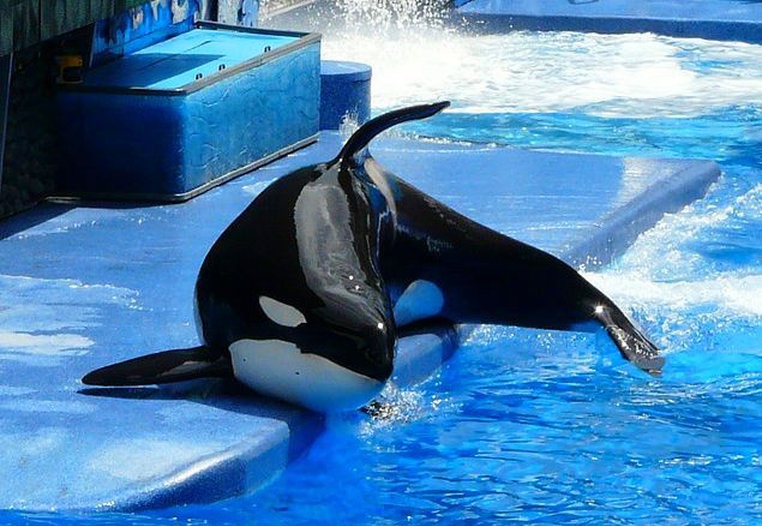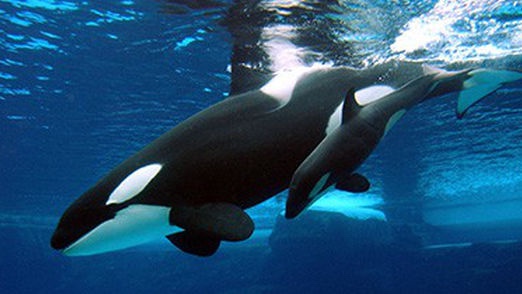For facilities that have ceased their support of capture operations, captive breeding programmes are the main alternative for sustaining and increasing cetacean populations under human care. However, even the process of reproduction (and its courtship behaviours) is frequently manipulated in captivity, often to the point that nature’s most natural behaviour no longer reflects that of wild cetaceans.
In the wild, female killer whales will produce one calf every 3-10 years (averaging every 5 years) from the age of 12-14 until they reach the menopause. Up to 50% of females do not reproduce once nearing 40, whereas those in the North Pacific usually stop reproducing after reaching age 46. In captivity, females are bred too frequently at very young ages, often producing hybrids as a result of the artificial groupings of different populations and eco-types at captive display facilities. For example, SeaWorld’s killer whale Kalina had already given birth to two calves by the time she reached ten years old. By the age of 19, Kalina had given birth to 5 hybrid calves, all within an 11-year-period.

Photo submitted by Jason Lee Scott.
Many animals are also encouraged or forced to mate by being locked into small tanks with sexually frustrated members of the opposite sex. Icelandic female Gudrun was often locked in a back pool with Bigg’s transient Kanduke at SeaWorld Orlando. He would relentlessly chase Gudrun around the tank, trying to penetrate her repeatedly. Kanduke’s forceful antics led to Gudrun becoming pregnant and giving birth to Taima (a hybrid) in 1989.
Additionally, “all the successful major breeding programs for killer whales, dolphins, seals and penguins in the United States, Canada, Mexico and Europe[…]” have given their animals “Sea Tabs” – a form of vitamin. As a diet of frozen fish can cause some zoological animals to become deficient in vitamins such as A, D, E, and B1, marine parks supplement their cetaceans’ diet with sea tabs to ensure they have all the nutrients they require to stay healthy. Sea Tabs also increase sex drive which makes them particularly beneficial to breeding programmes. As a result, even the “natural” breeding of captive whales and dolphins isn’t so natural at all. Some facilities then take it a step further and disregard all natural breeding behaviours by using artificial insemination procedures. Currently, at least 5 killer whale calves (Nakai, Kohana, Moana, Makani and Kamea) have been born in captivity as a result of artificial insemination.

Photo sourced from Orca Pod Wiki.
Breeding in captivity can be explored in three different areas: average at first observed birth, viable calving interval and conservational value. Although SeaWorld Inc. has ended its killer whale breeding programme, it remains responsible for the largest orca breeding programme in the history of orca captivity. Because of this, a special emphasis will be put on SeaWorld.
Disclaimer: Be aware that mothers who were pregnant when captured (Bonnie, Kianu and Sacchi) have been excluded from all data analysis as their pregnancies were not a result of captive breeding.